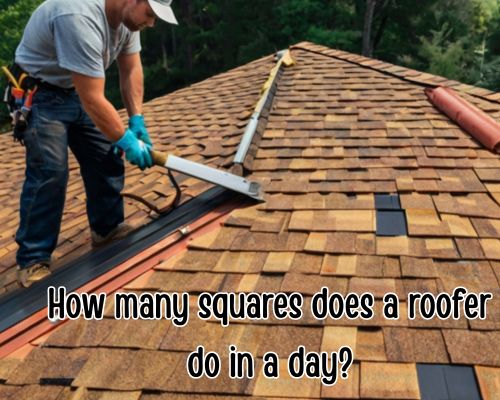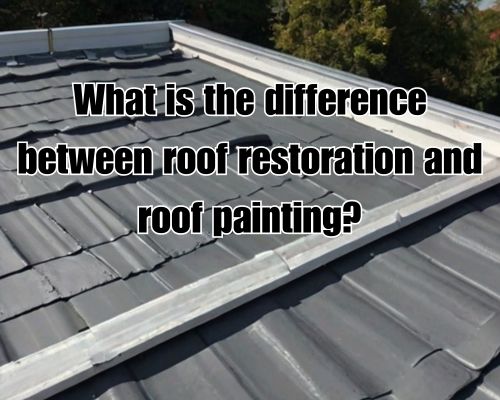When planning a roofing project in New Jersey, one question many homeowners and general contractors ask is: “How many squares does a roofer do in a day?” This seemingly simple question is layered with variables — from weather and roof complexity to crew size and material type. With Charles Jimerson of CJ Commercial Roofing NJ, we’ll unpack what a “square” means in roofing, explore how productivity varies, and contextualize it for New Jersey’s unique roofing landscape, from Jersey City to Cherry Hill.

🧱 What Is a “Square” in Roofing Terms?
First, let’s define a “square.”
In roofing, one square equals 100 square feet of roof surface. So, if your roof is 2,000 square feet, that’s 20 roofing squares. It’s the standard unit used by roofing contractor, material suppliers, and insurance adjusters alike.
Knowing this helps homeowners understand labor estimates, material quantities, and project timelines — especially relevant in New Jersey, where weather and urban density can impact scheduling.
🛠️ So, How Many Squares Can a Roofer Install Per Day?
Here’s where nuance kicks in. On average:
- Experienced roofing crews typically install 10 to 30 squares per day.
- Individual roofers may handle 6 to 10 squares daily, depending on conditions.
- Larger teams with specialized roles (tear-off crew, installers, runners) can finish 40+ squares per day on straightforward roofs.
However, that’s a national ballpark. Let’s get more specific to New Jersey’s roofing industry.
🏘️ Roofing in New Jersey: Key Factors That Affect Daily Output
Roofers working in New Jersey face unique environmental and architectural factors that influence productivity.
1. Weather Patterns in the Garden State
New Jersey’s seasonal extremes — from humid summers to snowy winters — directly affect how many squares a roofer can lay in a day.
- In spring and fall, conditions are ideal: mild temperatures, less rain.
- In summer, roofers may limit output due to heat-related safety concerns.
- In winter, snow and ice can reduce productivity or halt work entirely.
2. Urban vs. Suburban Roof Structures
The architecture across New Jersey varies dramatically:
- Row homes in Newark or Jersey City often have tight spaces and limited access.
- Suburban homes in Princeton or Morristown usually have better staging areas and simpler layouts.
The more complex or steeper the roof (known as roof pitch), the fewer squares a roofer can safely complete in a day.
3. Type of Roofing Material
In Monmouth County or Ocean County, where coastal winds can be intense, homeowners often opt for metal or architectural shingles.
Each material affects roofer output:
- Asphalt shingles: Fastest to install; can yield 20–30 squares per day per crew.
- Metal panels or slate tiles: Slower, requiring precision; crews might do just 5–10 squares daily.
🔍 Realistic Estimates from New Jersey Roofing Contractors
We surveyed roofing professionals in New Brunswick, Trenton, and Hoboken, and here’s what they shared:
“On a perfect roof with no valleys, no dormers, and good weather, my 4-man crew does about 25–30 squares a day.”
— Frank D., licensed roofer in Bergen County
“Older homes in South Jersey, especially near Camden, have steep pitches and layers to strip. We usually manage 12–15 squares per day on those.”
— Alicia G., foreperson, Vineland Roofing Pros
These quotes highlight that project specifics — not just manpower — determine daily square coverage.
🛡️ Why Daily Square Output Matters for Homeowners
If you’re planning a roof replacement or new construction in Essex County or Mercer County, understanding a roofer’s daily productivity helps you:
- Estimate project duration: 20 squares = 2–3 days for a mid-sized crew.
- Vet contractor claims: Exaggerated promises of 40+ squares/day on a steep, complex roof should raise eyebrows.
- Plan around weather: Schedule during optimal seasons (May, September) for faster turnaround.
- Understand cost structures: Labor time directly impacts your total roofing cost.
🧮 Estimating Project Time: Sample Scenarios
Scenario A: Asphalt Roof in Westfield, NJ
- Roof size: 28 squares
- Roof type: Gable, 5/12 pitch
- Crew: 5 workers
- Conditions: 70°F, clear skies
➡ Estimated Time: 1.5–2 days
Scenario B: Slate Roof in Montclair, NJ
- Roof size: 22 squares
- Roof type: Hip, 10/12 pitch
- Crew: 3 workers
- Conditions: Overcast, light wind
➡ Estimated Time: 3–4 days
As you can see, location and complexity in New Jersey municipalities can drastically alter installation timelines.
👷 How to Choose the Right Roofer in New Jersey
To ensure your project runs on time:
- Ask about crew size and experience
- Request local references (especially from towns like Edison, Hackensack, or Atlantic City)
- Review state licensing at New Jersey Division of Consumer Affairs
- Get written estimates detailing how many squares they expect to install per day
🧩 Final Thoughts: There’s No One-Size-Fits-All Answer
So, how many squares does a roofer do in a day? In New Jersey, the answer is: It depends — but averages fall between 10 and 30 squares for a team, and 6–10 for a solo roofer under optimal conditions.
The better question to ask might be: What is realistic for my specific project in my specific location?
Whether you’re replacing storm-damaged shingles in Toms River or re-roofing a colonial in Morristown, understanding this metric equips you to make smarter, faster, and more cost-effective decisions.
📞 Need a Roofing Quote in New Jersey?
Looking to get your roof done by a crew that understands New Jersey’s climate, architecture, and building codes? Connect with a licensed local roofer and ask the right question:
👉 “How many squares can your crew handle per day — on my roof?”
Because in the Garden State, efficiency isn’t just about speed — it’s about smart planning.
